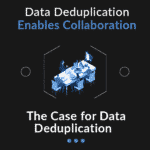Business Impact Analysis: Understanding the True Cost of Disruption
In a world where cyber threats, natural disasters, and system failures can strike at any moment, one question remains critical for every organisation: how quickly can you recover?
A Business Impact Analysis gives you the answer. It helps businesses understand the operational and financial effects of downtime, providing a roadmap for resilience. Whether the disruption stems from a cyberattack, a network outage, or hardware failure, the insights gained through Business Impact Analysis guide recovery priorities and resource allocation.
When implemented correctly, it becomes the cornerstone of your business continuity and disaster recovery (BCDR) plan, ensuring you stay operational even when the unexpected happens.
What Is a Business Impact Analysis
A Business Impact Analysis is a structured process that assesses the potential effects of disruptions on business operations. It identifies which systems and processes are most critical and determines the financial, operational, and reputational consequences of downtime.
The insights from a Business Impact Analysis allow you to create recovery strategies that minimise downtime and data loss. Unlike a risk assessment—which focuses on identifying risks—a BIA focuses on understanding the impact of those risks once they occur.
Put simply, a BIA helps you answer key operational questions:
-
What processes are essential to daily operations?
-
How long can they be offline before damage occurs?
-
What resources are needed to restore them quickly?
With these answers, your organisation can focus its efforts on what matters most.
Why Every Business Needs a Business Impact Analysis
No business is immune to disruption. From cyber incidents and supply chain breakdowns to weather-related events and hardware failure, every organisation faces potential downtime.
A Business Impact Analysis is not just a risk management exercise—it’s a strategic necessity. Here’s why:
1. Strengthens Business Continuity
A well-executed BIA forms the foundation for an effective Business Continuity Plan. By identifying your most critical systems, processes, and dependencies, it helps you prioritise recovery and allocate resources efficiently during a crisis.
2. Supports Data Security
A key part of Business Impact Analysis is mapping how sensitive data moves through your organisation. Understanding where your data resides—whether on-premise, in the cloud, or within IoT ecosystems—helps you apply the right protection measures. For more on safeguarding connected systems, see our IoT Security post.
3. Improves Compliance
A Business Impact Analysis ensures your organisation meets regulatory and cyber insurance requirements. Many compliance frameworks, such as ISO 22301 or SOC 2, require documented BIAs as proof of resilience planning.
4. Enhances Cyber Preparedness
When paired with Cyber Security and threat monitoring, your BIA provides a clear roadmap for defending against attacks. It highlights vulnerable systems and defines how quickly each should be restored after a breach.
5. Reduces Financial and Reputational Damage
Every minute of downtime costs money. A BIA quantifies these costs so leadership can make informed decisions about investments in redundancy, security, and disaster recovery.
Core Components of Business Impact Analysis
To be effective, your Business Impact Analysis must include these essential elements.
Recovery Point Objective (RPO)
RPO defines how much data loss your business can tolerate in the event of disruption. For example, if your RPO is one hour, your backup systems must restore data up to the last hour before the incident occurred.
Maximum Allowable Downtime (MAD)
MAD, sometimes referred to as Recovery Time Objective (RTO), represents the longest period a critical function can be unavailable before the impact becomes unacceptable.
Dependencies
Business Impact Analysis identifies interdependencies between systems, departments, and suppliers. Understanding these relationships allows you to prioritise recovery efforts based on which functions rely on others to operate.
Business Impact Metrics
These quantify the tangible and intangible consequences of downtime—lost revenue, compliance penalties, reputational harm, and customer dissatisfaction. Tracking these metrics helps businesses justify continuity investments.
Common Mistakes to Avoid
Many businesses approach Business Impact Analysis as a one-off compliance task rather than an ongoing process. This leads to outdated results and flawed recovery strategies. Common mistakes include:
-
Failing to update BIAs as systems evolve
-
Overlooking third-party dependencies
-
Ignoring the financial cost of downtime
-
Relying on opinions instead of objective data
To avoid these pitfalls, integrate your BIA into ongoing business reviews, testing cycles, and training sessions.
Business Impact Analysis Best Practices
1. Secure Executive Sponsorship
A BIA needs visible support from senior leadership to succeed. Without it, findings often sit on a shelf, unimplemented. Executive involvement ensures accountability and resource allocation for recovery measures.
2. Use Objective Criteria
When identifying critical systems, rely on measurable criteria—such as transaction volume or financial contribution—rather than personal opinions. This keeps recovery priorities aligned with business goals.
3. Engage External Experts
Establishing accurate RPOs and RTOs requires technical and operational insight. Working with experienced IT professionals like Exodesk ensures your BIA aligns with industry standards and integrates with your broader IT Consulting strategy.
4. Test and Refine Regularly
Your BIA should evolve alongside your business. Review it annually or whenever new systems, regulations, or risks emerge. Testing ensures assumptions hold true in real-world scenarios.
5. Integrate Findings into Training
Once your Business Impact Analysis identifies critical systems and procedures, communicate these insights to your teams. Regular training ensures employees understand their role during disruptions and know how to maintain operational continuity.
The Role of Technology in Modern Business Impact Analysis
Modern BIAs rely heavily on technology to automate data collection, simulate disruptions, and model recovery outcomes. Cloud platforms, monitoring tools, and analytics software make it possible to generate real-time insights rather than static reports.
For example:
-
Cloud backups can automatically track RPOs and RTOs across systems.
-
AI-driven analytics can predict potential bottlenecks during recovery.
-
Integration with Managed IT Services ensures recovery plans align with real-time system performance.
Combining Business Impact Analysis with digital transformation initiatives gives decision-makers visibility into how operations, data, and security interconnect.
Business Impact Analysis and Cyber Resilience
Cyber incidents have become one of the most common causes of business disruption. From ransomware to phishing attacks, no organisation is immune. A BIA quantifies the impact of such incidents, allowing you to prepare practical, cost-effective defences.
For example, integrating findings from your BIA with Exodesk’s Email Security or Malware Protection services can significantly reduce downtime and prevent data loss during an attack.
By aligning Business Impact Analysis with cybersecurity strategy, businesses gain full visibility of risk exposure and recovery priorities.
Partnering with Exodesk for Business Impact Analysis
At Exodesk, we help organisations across New Zealand build resilience through comprehensive Business Impact Analysis and continuity planning. Our approach includes:
-
Assessing critical processes and dependencies
-
Defining measurable recovery objectives
-
Modelling downtime costs and operational impacts
-
Aligning recovery strategies with your IT infrastructure
-
Testing and refining plans to ensure effectiveness
With deep expertise in managed IT, cybersecurity, and cloud infrastructure, we ensure your Business Impact Analysis becomes a living, actionable framework—not just a compliance document.
Frequently Asked Questions
1. What is Business Impact Analysis?
It’s a structured process that identifies critical business functions and quantifies the impact of disruptions on operations, finances, and reputation.
2. How is a BIA different from a risk assessment?
A risk assessment identifies potential threats, while a BIA measures how those threats affect your business if they occur.
3. How often should a Business Impact Analysis be conducted?
At least annually or whenever major changes occur to your systems, staff, or operational structure.
4. What industries benefit most from a BIA?
Every industry benefits, but sectors like healthcare, finance, manufacturing, and technology depend heavily on it due to regulatory and operational risks.
5. Who should participate in the Business Impact Analysis process?
IT, operations, finance, HR, and executive leadership all play key roles in identifying and prioritising critical processes.
6. Can Exodesk help develop and manage a BIA?
Yes. Exodesk provides end-to-end Business Impact Analysis services, integrating them with your business continuity, cybersecurity, and IT frameworks.
Final Thoughts
A Business Impact Analysis isn’t just about risk—it’s about readiness. By understanding the true cost of downtime and identifying what’s critical to your operations, you empower your organisation to recover faster and stronger.
Exodesk helps New Zealand businesses turn insight into action through expert-led Business Impact Analysis and continuity planning.
If you’re ready to build resilience and protect your organisation from disruption, contact Exodesk today or connect with us on LinkedIn to keep up with more insights.


